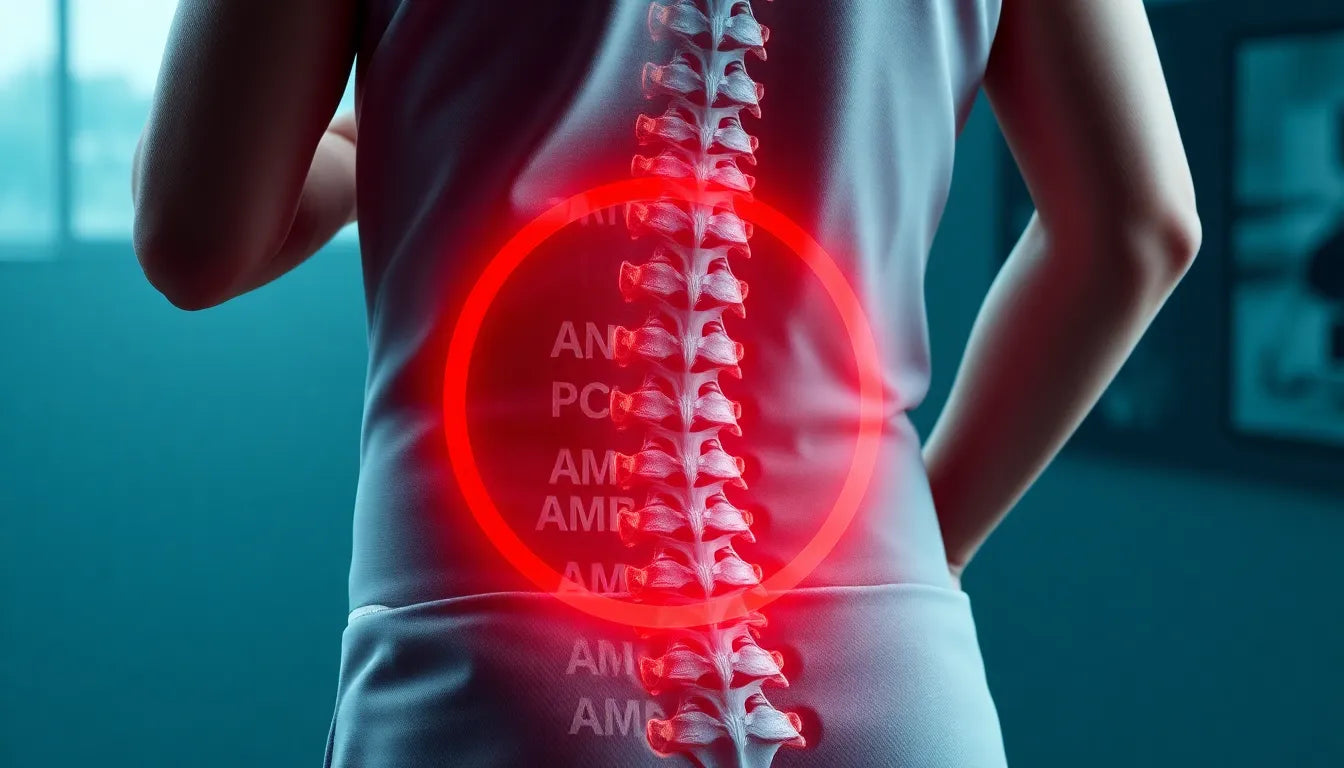Understanding how to fix a herniated disc is crucial for those suffering from this common spinal condition. A herniated disc, sometimes referred to as a slipped or ruptured disc, occurs when the soft, gel-like center of a spinal disc pushes through a tear in its tougher outer layer. This can lead to pain, numbness, or weakness in an arm or leg, depending on the location of the herniated disc in the spine.
Common symptoms and prevalence
Herniated discs can cause a variety of symptoms, with pain being the most prevalent. This pain can range from mild to severe and may be accompanied by tingling or numbness in the affected area. Weakness in the muscles served by the affected nerves can also occur, potentially impacting one's ability to perform everyday tasks. The prevalence of herniated discs is notable, affecting a broad range of individuals, particularly those between the ages of 30 and 50. This condition is a leading cause of back pain and can significantly impact daily life and mobility.
The importance of effective treatment
The impact of a herniated disc on daily life can be profound. The pain and discomfort can limit mobility, making it difficult to perform routine activities and diminishing overall quality of life. Therefore, effective treatment is essential not only to alleviate pain but also to restore functionality. The primary goal of treatment is to manage symptoms and improve quality of life, ideally without resorting to surgery. Many individuals find relief through conservative (non-surgical) treatments, which can often be sufficient to manage the condition.
Your journey to relief
Embarking on the journey to relieve herniated disc pain involves understanding the various treatment options available. While surgery is sometimes necessary, it is often considered a last resort. There are many steps you can take before reaching that point, including lifestyle modifications, physical therapy, and other non-invasive interventions. This stepwise approach not only provides multiple avenues for relief but also empowers individuals to take control of their health and well-being. By exploring these options, you can find a path to recovery that suits your specific needs and circumstances.
Conservative treatments for herniated disc relief
When it comes to addressing a herniated disc, conservative treatments are often the first line of defense. These non-surgical methods focus on alleviating pain and restoring function, allowing many individuals to avoid more invasive procedures.
Rest and activity modification
One of the initial steps in conservative treatment is rest and activity modification. It is crucial to avoid activities that exacerbate symptoms, such as heavy lifting or prolonged sitting. However, complete bed rest is not recommended. Instead, short-term rest combined with maintaining some level of activity can prevent stiffness and promote healing. Gentle movements and adjustments in daily routines can significantly contribute to recovery.
Pain management strategies
Pain management is a cornerstone of conservative treatment for herniated discs. Over-the-counter medications like NSAIDs (non-steroidal anti-inflammatory drugs) and acetaminophen are commonly used to reduce inflammation and alleviate pain. In some cases, muscle relaxants may be prescribed to address muscle spasms. These medications provide temporary relief, enabling individuals to participate more effectively in physical therapy and other rehabilitative activities.
The role of physical therapy
Physical therapy plays a pivotal role in the conservative management of herniated discs. A structured therapy program can strengthen the muscles that support the spine, improve flexibility, and promote proper spinal alignment. Physical therapists often recommend specific exercises such as gentle stretches, core strengthening, and low-impact aerobic activities. These exercises help reduce pain, enhance mobility, and prevent future disc issues.
Home remedies for pain relief
In addition to professional treatments, several home remedies can aid in managing herniated disc symptoms. Hot and cold therapy is a popular method; applying heat can relax tense muscles, while cold packs can reduce inflammation and numb sharp pain. Ergonomic adjustments, such as using supportive chairs and mattresses, can also help maintain proper posture, further alleviating discomfort.
Exploring minimally invasive interventions
For those who do not find sufficient relief from conservative treatments, minimally invasive interventions offer an alternative path to pain management.
Epidural steroid injections
Epidural steroid injections (ESIs) are frequently used to reduce inflammation around the affected nerves. These injections, typically guided by imaging for precision, can provide significant pain relief and improve function. They are often considered when pain persists despite other treatments.
Selective nerve root blocks
Selective nerve root blocks (SNRBs) serve both diagnostic and therapeutic purposes. By targeting specific nerves, these injections can help identify the source of pain while also providing temporary relief. This dual purpose makes them a valuable tool in the treatment of herniated discs.
Emerging therapies: A2M injections
Among the newer interventions, A2M (alpha-2-macroglobulin) injections are gaining attention. These injections utilize the body’s natural anti-inflammatory proteins to target inflammation directly. While still emerging, A2M injections represent a promising alternative to traditional steroid treatments.
Non-surgical spinal decompression therapy
Spinal decompression therapy is another non-surgical option for relieving herniated disc pain. This therapy involves using a mechanical table to gently stretch the spine, relieving pressure on the discs and nerves. Patients often report a comfortable experience, and the therapy can promote healing by allowing herniated discs to retract and reduce nerve impingement.
In summary, conservative treatments and minimally invasive interventions provide a comprehensive approach to managing herniated disc pain. By exploring these options, individuals can find effective relief and improve their quality of life without resorting to surgery.
Surgical treatments for herniated disc pain
While many individuals find relief through conservative and minimally invasive treatments, surgery may become necessary for those with severe, persistent pain or neurological deficits. Surgical intervention is typically considered when all other options have been exhausted and the patient's quality of life is significantly impacted.
When surgery is considered
Surgery is generally reserved for cases where there is a loss of function, severe pain that does not respond to other treatments, or significant neurological deficits such as loss of bowel or bladder control. The decision to proceed with surgery is made after careful evaluation by a healthcare professional, often involving imaging studies to pinpoint the exact issue.
Common surgical procedures
Several surgical options are available to address herniated discs, each with specific goals and techniques:
- Microdiscectomy/Discectomy: This procedure involves removing the herniated portion of the disc to relieve pressure on the nerves. It is the most common surgical treatment for herniated discs and is often performed using minimally invasive techniques.
- Artificial disc replacement: In cases where the disc is severely damaged, replacing it with a synthetic disc can maintain spinal movement and reduce pain.
- Spinal fusion: This procedure involves fusing two or more vertebrae to stabilize the spine, often used when spinal instability is present.
Reassurance with modern techniques
Advancements in surgical techniques have made these procedures less invasive, focusing on minimizing recovery time and improving outcomes. Patients can expect a comprehensive evaluation and personalized care plan to ensure the best possible results.
Lifestyle and preventive strategies
Long-term management of herniated disc pain involves adopting lifestyle changes and preventive strategies to support spinal health and reduce the risk of recurrence.
Weight management and posture
Maintaining a healthy weight is crucial for reducing stress on the spine. Additionally, practicing good posture and using ergonomic furniture can help prevent further disc issues. Simple changes, such as adjusting your workspace or using supportive shoes, can make a significant difference.
Regular exercise for spinal health
Engaging in regular physical activity is essential for strengthening the muscles that support the spine. Exercises like swimming, walking, and yoga can improve flexibility and core strength, contributing to overall spinal health.
Frequently Asked Questions
Can you fix a herniated disc without surgery?
Yes, many individuals successfully manage herniated disc symptoms through conservative treatments such as physical therapy, pain management, and lifestyle modifications. These methods can often alleviate pain and restore function, making surgery unnecessary for most people.
How long does a herniated disc take to heal?
Recovery times can vary depending on the severity of the herniation and the treatment approach. Many people experience significant improvement within a few weeks to a few months with conservative care. However, some cases may take longer, especially if surgery is required.
What activities should be avoided with a herniated disc?
It is important to avoid activities that exacerbate symptoms, such as heavy lifting, prolonged sitting, or high-impact sports. Instead, focus on low-impact exercises and consult with a healthcare professional for personalized recommendations.
Is spinal decompression therapy effective for everyone?
Spinal decompression therapy can be effective for many individuals, but its success depends on the specific condition and individual response. It is best to consult with a healthcare provider to determine if this therapy is suitable for your situation and to discuss expected outcomes.
Sources
- "Herniated Disk: Symptoms and Causes." Mayo Clinic.
- "Herniated Disc." Cleveland Clinic.
- "Herniated Disc Treatment." Sciatica.com.
- "Herniated Disk." WebMD.
- "Herniated Disc Treatment Options." Cuellar Spine.
- "Herniated Disc Treatment." MidAmerica Orthopaedics.
- "Spinal Decompression Therapy." Northeast Spine & Sports Medicine.


















